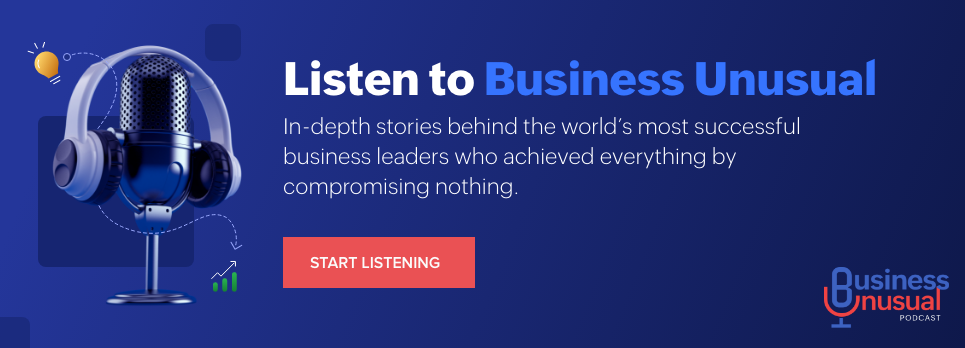In this Leadership Perspectives series, we ask different industry leaders to share their thoughts on trending business tech topics. Rahul Trivedi is the Vice President of Operations at TransUnion, a consumer credit reporting agency with over $3.5 billion in revenue. Rahul has over 28 years of leadership experience with more than 10 years with Intelligent Process Automation, and he's shared his perspectives on AI and tech adoption.
What are the main benefits you expect for businesses that adopt generative AI, and will that contribute to competitive advantage?
Generative AI will be revolutionizing the way businesses operate, offering a myriad of benefits that can give early adopters a significant competitive advantage. As organizations look to stay ahead of the curve, let's explore the key benefits of embracing generative AI technologies.
- Enhanced Creativity and Innovation
Generative AI models can produce a wide range of outputs – from text and image generation to music composition and more. Businesses can leverage these capabilities to boost their creative potential, sparking new ideas and breakthrough innovations. By augmenting human creativity, generative AI can help organizations stay ahead of their competition and develop unique products and solutions.
- Increased Efficiency and Productivity
With the help of AI-generated content, businesses can streamline and automate their workflows and reduce the time spent on repetitive tasks. This will enable employees to focus on higher-value activities, ultimately boosting productivity and efficiency across the organization.
Personalized Customer Experiences
Generative AI can help businesses deliver hyper-personalized experiences to their customers. By analyzing customer data and preferences, AI algorithms can create tailor-made content, offers, and recommendations that resonate with individual users. This can lead to increased customer satisfaction, loyalty, and ultimately, revenue. This idea appeared as a fiction in the movie Minority Report, with hyper-personalized and targeted ads being shown to individual characters, and now it's becoming possible in reality.
Cost-Effective Solutions
In the long run, incorporating generative AI can lead to significant cost savings for businesses. By automating routine tasks, businesses can reduce labor costs while maintaining or even improving the quality of their output. Additionally, AI-generated content can be more cost-effective than hiring specialized professionals for certain tasks.
Improved Decision-Making
Generative AI can assist in data-driven decision-making by synthesizing vast amounts of information and identifying patterns that might be overlooked by human analysts. This can lead to more informed decisions and strategies, ultimately improving overall business performance. Already AI programs have achieved an accuracy rate better than 99% of doctors in reading x-rays, ECGs, and mammograms.
In conclusion, the adoption of generative AI offers a wealth of benefits for businesses, including enhanced creativity, increased efficiency, personalized customer experiences, cost-effective solutions, and improved decision-making. Organizations that embrace these cutting-edge technologies are likely to gain a significant competitive advantage, positioning themselves for success in an increasingly AI-driven world.
What strategies can leadership use to create a smooth transition and encourage organizational adoption?
Organizational adoption of new technology can be a challenging process. However, there are several strategies that leadership can use to create a smooth transition and encourage adoption.
Develop a long-term technology adoption strategy: Creating a long-term technology adoption strategy for your organization is key to success in the long run. In addition, it will assist you in sticking to your end goals without getting distracted.
Change management: Communication is key when it comes to organizational adoption of new technology. Ensure that you have a plan in place for communicating with employees about the new technology and answering any questions. Employees are more likely to adopt new technology if they understand how it will benefit them and the organization as a whole.
Organize training and learning: Organizational adoption of new technology often hinges on availability of training and learning resources. Make sure that you provide adequate training and learning opportunities for employees so that they can learn how to use the new technology effectively.
Evaluate your adoption’s initial success: After implementing new technology, it’s important to evaluate its initial success. This will help you identify areas where you need to make improvements and ensure that further rollouts have better outcomes. To encourage organizational adoption of new technology, leaders should select the right early adopters.
In conclusion, creating a smooth transition and encouraging organizational adoption of new technology requires careful planning, communication, training, evaluation, and investment. By following these strategies, leadership can ensure that their organization is well-equipped to take advantage of the latest technological innovations.
What emerging trends or advancements in generative AI do you foresee having the most significant impact on industries in the near future?
Generative AI is a rapidly evolving field that is expected to have a significant impact on various industries in the near future. According to Analytics Insight, some of the top emerging trends in generative AI for 2023 include:
- Image Generation: AI image production will see significant advancements. This will have a significant impact on marketing.
- Video Generation: Text-to-video creation will also see an extension of generative videos beyond just a single prompt that generates a short 10-second video of the same object and scene. This will have a significant impact on learning and training.
- Audio Generation: AI-generated audio will have impact in all walks of life include learning, travel, call centers, etc.
- 3D Generation: AI-generated 3D renderings will have significant impact for product design and engineering teams.
- Hyper-Personalization: AI-generated hyper personalized advertisements will target customers like never before.
Bonus question: If you could have any fictional AI assistant from a movie or TV show, who would you choose and why?
I would personally choose Samantha from Her because she is portrayed as an intelligent and empathetic character that can understand human emotions and connect with the users. That makes Samantha more than just a machine. The way Samantha provides help with daily tasks such as emails, reminders, and writing letters is a glimpse of things to come. In the future, Samantha-like assistants will be able to provide companionship.


